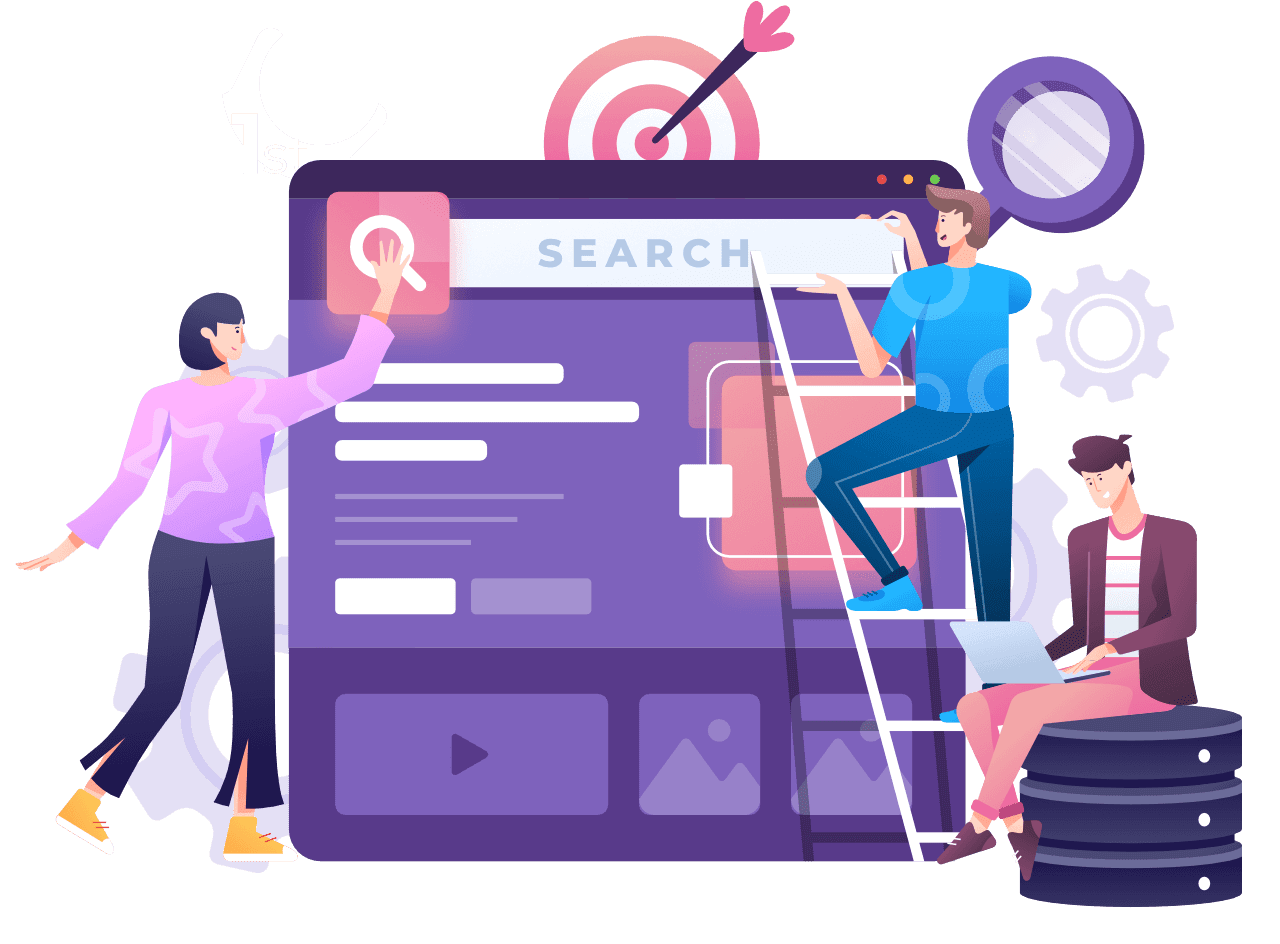
It’s almost impossible to measure the effects of advertising, packaging, distribution channels, media expenditures, social media Likes and Tweets, sales organizational structure, etc., on brand share or sales revenue. Without good data and absent any trustworthy feedback loop, marketing managers often turn to the security of marketing myths, pop culture marketing fads, fawning at the feet of consultants, and polishing up their résumés before the ax falls. Is marketing solely a game of chance, or might there be a way to bring scientific methods to the table? Let’s draw a distinction between the micro and the macro. At the micro-level, the various pieces of the marketing puzzle can be and should be optimized on an ongoing basis. The overall positioning and strategy should be evaluated. Optimize marketing means all campaigns should be tested for effectiveness. Promotions should be tested. Package designs should be tested. Brand names should be evaluated.
These micro-level tests must be a constant and ongoing process of evaluation, tweaking, and reevaluation, to continuously improve the gears, bearings, and levers that make up the marketing engine. Optimizing these microelements of marketing typically yields improvements in sales revenue and market share. But this is only the first step on the optimization stairway. Every business needs to market its products or services in order to get new customers or simply to get new business from existing customers. However, it is also important for businesses to get the maximum bang for their buck. If the marketing spends of a business is more than the revenue generated through it, the business is, eventually, going to become unsustainable. That’s where marketing optimization comes in. In this guide, we’ll show you all the various marketing optimization techniques to set your business up for success.
How to Build a Marketing Optimization Strategy
How to Build a Marketing Optimization Strategy
Building a marketing optimization strategy requires thoughtful and strategic planning. Of course, building an optimization plan depends on the specific channel you’re using. However, in general, you can follow these steps to optimize marketing campaigns.
1. Determine Business Objectives
1. Determine Business Objectives
Whether the priority of the business is acquiring customers or looking to increase average customer spend, optimization can make a difference. However, before even considering optimization technologies, it is important to assess exactly what the business is looking to achieve.
2. Prioritize Optimization Activity into Campaign Road Map
2. Prioritize Optimization Activity into Campaign Road Map
It is important to have a frank discussion with all stakeholders about what can be achieved with optimization and how much work will be required. At this point, with a number of ideas on the table, it is also important to prioritize activity into a road map of campaigns. If possible, the four or five top business outcomes should be ranked to provide further guidance and direction; it is then important to consider the priority outcomes in tandem with the optimization process and opportunities.
3. Organize for Optimization Success
3. Organize for Optimization Success
Having determined the objective of the optimization strategy, an organization needs to empower the right people to realize business objectives. This is a huge step forward from a single, isolated conversion manager; a successful strategy requires the coordination and collaboration of several individuals, from product marketers and web developers to the analytics team.

4. Create a Culture of Data-Driven Decision Making
4. Create a Culture of Data-Driven Decision Making
Data-driven decision-making based on customer input fundamentally transforms the cultural approach to optimization. It removes decisions made by a gut feeling, evolves the optimization team beyond business as usual, and, most important, provides proven insight into the validity of various business concepts while retaining focus on key strategic priorities.
5. Measure and Communicate Performance
5. Measure and Communicate Performance
Once a culture of data-driven decision making and business outcome-led optimization has been put in place, it is essential to share the results and insights across the business and ensure all stakeholders recognize the value of the investment.
Multi-Channel Marketing Optimization
Multi-Channel Marketing Optimization

Multi-channel marketing is an approach to marketing that involves using multiple channels to interact with customers in an integrated way, creating a seamless customer experience across channels. Whether a customer is shopping on your eCommerce site from their laptop or smartphone, viewing an ad on TV, or visiting a brick-and-mortar store, they’ll have a consistent experience. All of the various channels share information, enabling you to use them optimally and create personalized experiences across them.
So what does it take to do multichannel marketing right? Here are three keys to success:
- Create and maintain a single view of the customer across all channels.
- Establish a multichannel marketing platform.
- Create consistent customer experiences across all channels.
Create and maintain a single view of the customer
Create and maintain a single view of the customer
Having a single view of the customer is critical. That's because today's customers often interact with your brand in a variety of ways that involve more than one touchpoint. It is vital that you have customer insight on how they behave across all channels, at each and every touchpoint, and that you also understand each customer's value to you. To get that single customer view, it may help to establish a centralized marketing data mart that consolidates all customer data in one place regardless of source. When creating and maintaining a single view of the customer, keep these points in mind:
- Having a lot of customer data is not the same as having a single view of the customer. It's not just the data itself that is important; it's what you do with it.
- Your customer view must evolve. Customers change. Businesses change. Your customer view must change along with them. That means bringing in new data, refreshing old data, building new models, updating old ones, etc.
Establish a multichannel marketing platform
Establish a multichannel marketing platform
You may have heard the saying, "If all you have is a hammer, everything looks like a nail." The concept certainly applies to marketing, and that's why it's so important to establish a multichannel marketing platform. And by "multichannel marketing platform," we mean one that includes processes and technology to support:
- Campaign management, including capabilities for segmentation, workflow creation, and campaign execution.
- Advanced analytics, including predictive analytics and campaign optimization.
- Advanced execution, including capabilities for content management, event triggering, real-time decision making, and next-best-offer management for both inbound and outbound marketing programs.
- Response attribution, including the ability to perform marketing mix optimization, scenario planning, and marketing attribution analysis.
- Digital marketing, including capabilities that expand marketing beyond traditional channels to newer channels, including the Web, email, mobile, video, etc.
By establishing a multichannel marketing platform, you will be able to integrate traditional and emerging channels. You will also greatly simplify the creation and execution of cross-channel campaigns by enabling marketers to create, in essence, a single campaign that can be replicated across various channels. And all this puts the holy grail of marketing within your grasp – reaching the right person with the right offer through the right channel at the right time while reducing costs and improving the effectiveness and performance of your marketing efforts.
Create consistent customer experiences across all channels
Create consistent customer experiences across all channels
Customer experience is one of the most powerful competitive differentiators. And while the quality of the customer experience is important, consistency is equally important. That's because your customers experience your brand as a whole, whether their interactions with you are online, in a store, over the phone, or some combination of these. What value is there in a positive online experience if a customer's in-store experience is negative? If you treat each channel as a distinct entity, you run the risk of turning customers against you if you fail to deliver consistency.
Search Engine Marketing Optimization
Search Engine Marketing Optimization
In today’s digital marketplace, search engine optimization seems to be a topic that’s on every small business owner's mind. That’s because the majority of consumers are using search engines like Google to find the brands, products, and services that they need most. But how do you increase search engine optimization results? There are many different factors involved in your search engine ranking. And improving your ranking is no easy task. If you want to succeed with SEO marketing, start by building an SEO-friendly website. Your website is the heart of your SEO campaign. If you’re going to use SEO marketing to your advantage, you must build a website that is friendly for search engines to crawl and index. Your website should also be easy for people to use. On-page and technical SEO strategies will help you build an SEO-friendly site.
To summarize, you’ll want to:
- Conduct keyword research and integrate relevant keywords on your website
- Improve your site’s load time
- Create a mobile-friendly or responsive design
- Make your site user-friendly
- Optimize your title tags and meta descriptions to include keywords and be descriptive
- Attract links from other websites to your site and its content

These practices are all ways for you to build an SEO-friendly website for your business. By implementing these strategies, you’ll help your company rank better in search results.
Create original, helpful, and engaging content
Create original, helpful, and engaging content
If you want to know how to do search engine optimization successfully, integrate content creation into your SEO plan. Content marketing plays a pivotal role in helping your site rank better in search results. Content helps drive valuable traffic to your site and increases your ranking in search results. If you want to have an effective SEO marketing campaign, you must invest in a quality content marketing plan. To get started with content marketing, you’ll need to find industry-related topics to cover with your content, which can range from a blog post to an online guide. Keyword research will help you find critical topics you can use to create content. Once you have your topics, you’ll choose your format. Content comes in numerous formats, including videos, blogs, ebooks, infographics, and podcasts. You’ll want to establish which forms resonate most with your audience, as well as the topic, and use a variety of them to keep your readers interested in your content. A compelling content marketing strategy posts content often to not only drive traffic to your site. You also provide users with additional content that helps them learn more about a topic, research a purchase, and more. By investing in content marketing, you’ll help your business drive more traffic to your site and see more success with your SEO marketing campaign.
Paid Marketing Optimization
Paid Marketing Optimization
It can be easy to want to sit back and relax after launching your paid media campaigns. You’ve put in all the hard work of designing creative and writing copy, setting bids, and nailing your targeting – it can feel like a break is well overdue. This is one of the most expensive mistakes you can make in paid advertising. To get the maximum return on investment for your paid media, you cannot take a set-it-and-forget-it approach. From day one, you’ll want to be optimizing your campaigns to ensure that they are working effectively.
Bids
Bids
The first thing that you want to optimize is your bidding. There are a lot of ways you might be bidding on your campaigns. You could be bidding manually, where you are going into the ad platforms yourself and setting a bid for each of your chosen keywords. There are also a variety of automated bidding strategies across platforms. For example, you might be using Google’s machine learning to employ the Target ROAS (return-on-ad-spend) bidding strategy. Or maybe you’re using the Highest Value bidding strategy on Facebook, which is designed to bid based on one’s likelihood to purchase. Whatever strategies you’re using, you need to be monitoring your ad performance to ensure that they are working correctly and spending your budget accordingly. For example, you might learn that your maximum bid is restricting your campaign from being served as frequently as you would like. Or maybe you are consistently not spending your daily budget. Or maybe your cost-per-acquisition is too high, and therefore, you’re only getting one conversion a day. All of these are signals that your bidding strategy is not working effectively and that there may be other, more suitable methods.
Targeting
Targeting
Once you’re happy with how your money is being spent, the next thing you want to look at is targeting. There’s a lot that falls into this bucket. For example, there is location, time of day, day of the week, age, interests, placements, and more. All of these criteria come together to reach the most relevant audience for your product or service. When I come to refine targeting, I like to ask myself: What can I exclude? If you’re getting started with running paid media campaigns, you probably won’t get your targeting perfect right away. Even if you’ve been running ads for years, there is still likely an opportunity to refine your targeting or even explore new avenues.

When you take a look at your reporting, try parsing out your data by your targeting criteria to see if you’re overinvesting in areas that aren’t bringing a return. Is it more expensive to target a particular location than others? Are you paying to place ads during times with low conversion rates? Are your ads appearing on irrelevant websites or being displayed for keywords that you should exclude? By answering questions like these, you’ll be able to spot places where you’re spending money without getting a return and remove it from your targeting.
Creative
Creative
Once you are happy with who you are reaching with your ads, you can refine your creative to make your ads even more relevant to that specific audience. Taking an experimental mindset will help you learn which creative options perform best. There are a lot of creative elements of your ads that you can test. For example, you could try out a different copy for your paid search ads, play around with creative types for your social ads, and even create different landing page experiences to optimize your conversion rate. All of these are things you may consider when looking to improve the performance of your paid media campaigns. But remember, when making any optimizations to your campaigns, be sure to only make one change at a time. If you pull too many levers at once, it’ll be impossible to know exactly which change made what impact. By tackling each of these three ways to optimize your paid media campaigns, you’ll have a stepwise and repeatable formula that you can use again and again to maximize your advertising success.
Email Marketing Optimization
Email Marketing Optimization
Email Marketing Optimization
Email marketing optimization is the practice of improving weak aspects of an email marketing campaign. Those aspects can be anything, from subject lines to targeted audience to the offer being made, that may hinder the performance of your campaign.
Write An Persuasive Subject Line
Write An Persuasive Subject Line
When creating a subject line, it's crucial to think beyond the box to ensure that it's not clickbait but still persuasive enough to entice readers to open your text. You want to pique their interest when the email arrives in their inbox, or else they'll skip to the one that catches their attention.
Use Visuals To Grab And Retain Attention
Use Visuals To Grab And Retain Attention
Visuals can be extremely useful in your email campaign. People react extremely well to visuals, which have been shown to dramatically increase interaction and average conversion rate. According to one report, adding photos to any message will result in a much higher interaction rate than text-only posts, which is significantly higher than average email conversion rates. Take advantage of the opportunity to grab the reader's attention both in the email and on the landing page. You can play around with emojis, stock images, diagrams, GIFs, and other elements. You don't even need to hire anyone to create these for you because you can get them for free from online picture banks. Also, different colors elicit different emotions and can help you better communicate your brand message. Do you want to pique your readers' interest? This buzz can be created by using colors such as red. Do you want to add a touch of sophistication to your email? Colors such as white and black can be used. Color psychology is essential for your visuals; learn more about how color selection will help you increase conversion!

Use An Effective Call To Action
Use An Effective Call To Action
Although it will seem obvious, the importance of explicitly explaining what you want your readers to do cannot be overstated. People respond to calls to action because it gives consistency and helps them to make a purchase or step further down the sales funnel. Make sure your call-to-action (CTA) is solid, straightforward, concise, and actionable. Aside from that, customized CTAs have been shown to increase conversions by more than 200 percent. So, go a step further and personalize your CTAs based on criteria like your readers' location, preferences, demographics, and so on to capture their attention and entice them to take the desired action.
Social Media Marketing Optimization
Social Media Marketing Optimization
Remember the days of strolling through the mall only to be bombarded by salespeople at every other kiosk? That’s how social media marketing can feel to a lot of consumers. Every other post these days is an ad or sales pitch. But, social media is made for people to be social. Here are tips you can implement to enhance your social media marketing results. So, how can you use social media optimization tips to cut through the clutter people see as they scroll?
Analyze your social media accounts
Analyze your social media accounts
Before you start making any changes to your social accounts, take note of what you currently do. Your current online presence gives you a baseline for where you can improve or what you decide should completely change. To determine your baseline, take a look at the following:
- Commonly used hashtags
- General content (e.g., captions)
- Keywords
- Frequency of your posts
- Branded logos (do they match your website and branding guidelines?)
- Landing pages
Once you have a general idea of what your accounts look like, decide if the current messaging aligns with your goals. And determine if your business’s social media looks more like one big promotion or if it shows a more general idea of your brand. Keep in mind that social media advertising is not a bad thing. But you don’t want it to look like that mall kiosk where every single post sells your audience on your products. Instead, analyze the ratio of product posts to purely social engagement posts. A one-to-one ratio may work, but you may need to add more engagement-only posts in the mix. As your business grows, continue to analyze your accounts to identify any trends and make adjustments.
Optimize your social media for search engines
Optimize your social media for search engines
If you’re already working on optimizing your business website for SEO, take that a step further and apply it to your social media. To help search engines boost your social media pages, consider doing the following:
- Add the same contact information across all platforms (i.e., phone number, address, and business website)
- Use the same username for each social media account
- Complete your company’s bio or “About” section for each social platform
- Incorporate keywords from your website in your social posts and “About” sections
For example, say your business sells custom drinking tumblers, and that is a keyword phrase you frequently use on your website. Consider adding the keyword phrase “custom drinking tumblers” in your social media “About” sections and as a hashtag in your posts. Be subtle with your keywords, and optimize when you use them. “About” sections and bios are prime spots for highlighting what your brand is about without overwhelming your posts with the same words, phrases, or hashtags. Consider looking for the best hashtags to use for small businesses to add to these sections, too. Remember to also use links wherever possible. With the goal of driving traffic to your business and website, add links to the most relevant content on your social platforms. Consider creating specialized links (e.g., UTM codes in URLs) to help analyze where your traffic comes from, too.

Display Marketing Optimization
Display Marketing Optimization
Review and exclude ad placements
Review and exclude ad placements
If you’re running display campaigns, addressing low-quality placement traffic is a great way to optimize display campaigns. When you aren’t monitoring and excluding low-quality and off-target ad placements, you’re likely experiencing:
- Skewed campaign metrics
- Early depletion of daily budget
- Poor landing page performance

Use location targeting
Use location targeting
Adding locations
Adding locations
Excluding locations
Excluding locations
You can also exclude countries outside the U.S. that doesn’t match your targeting goals. Always paste and review your exclusion list before saving so that you can make adjustments.
Bid adjustments for top-performing and underperforming locations
Bid adjustments for top-performing and underperforming locations
Check your ad schedule
Check your ad schedule
Affiliate Marketing Optimization
Affiliate Marketing Optimization
Affiliate Conversion Rate Optimization Checklist:
Affiliate Conversion Rate Optimization Checklist:
1. Always use the correct affiliate links. Sometimes links are copied and pasted incorrectly. Also, test links to ensure they're working, especially deep links. For example, a link may stop working because it was part of a limited-time promotion.
2. Promote multiple merchants to increase your sales opportunities. By doing so, you'll also reduce your dependency on one or a few merchants. Reducing your reliance is critical because merchants can end their programs and partnership with you anytime.
3. Promote products and services that cater to your audience to maximize conversion rates and sales. That may seem obvious, but some affiliates deviate from their audiences to market items that don't relate—for example, a food blogger who starts promoting CPA Marketing Networks.
4. Join and promote merchants offering high affiliate commission rates and long cookie/referral periods, such as 30%+, $100+, and 30+ days respectively. Also, you can partner with merchants that pay recurring commission rates of 20% or more to increase your monthly recurring revenue (MRR). Recurring commissions are an excellent way to make passive income.
5. Set your commission payout minimum to the lowest possible amount to get paid faster. Low payment minimums typically range from $10 to $50, depending on the merchant, affiliate marketing software, and affiliate network.
6. Run A/B tests on your copy, content, webpage design and other website elements to understand what works best for your audience and search engines. Frequent tests and strategic updates support higher conversion rates and sales.
Challenges of Marketing Optimization and How to Handle Them
Challenges of Marketing Optimization and How to Handle Them
Marketing optimization, which is increasing the percentage of your web visitors that convert into customers or take the desired action, is a modern must-do in internet marketing. Marketers from all industries with a wide array of calls to action can leverage conversion optimization for impact, including retailers looking for visitors to purchase a product, professional services seeking leads, and nonprofits asking for donations. While the benefits are strong, the process does have its challenges. Marketers who are new to conversion optimization should be prepared for the following common speed bumps and plan accordingly, knowing that there are certain tradeoffs and tools that can be used to overcome them.
Challenge #1: Gaining Brand Approval
Challenge #1: Gaining Brand Approval
Challenge #1: Gaining Brand Approval
Brand marketing and design teams can find themselves in conflict with one another when developing page designs for testing. It's important to keep in mind that while brand consistency and voice are incredibly valuable, it is equally valuable that you test different copy, images, and landing page styles for the potential of higher conversion. Brand teams may unknowingly prevent optimization teams from testing new and innovative ways to gain customer interest and attention in an effort to ensure everything passes the brand approval process.
Solution: It's important to understand the mission and values of your company. Create brand guidelines that the entire creative team must follow. Sacrificing your company's brand image can have long-term consequences that will be hard to fix down the road. For example, if you're looking to be an eco-friendly brand, you could make more sales by being loose with your ad creative. However, sacrificing the environmentally friendly mantra of your brand can lose the trust of your customers. Once teams have aligned on the designs they'd like to test, standard A/B testing procedures call for development resources to build the pages. For many, securing valuable dev hours can be a challenge to begin with and then prioritize the conversion optimization test over other development priorities. Oftentimes, it can take a month or more to build designs for testing, slowing the process significantly.
Challenge #2: Securing Development Resources
Challenge #2: Securing Development Resources
While outsource isn't our go to recommendation until you have established a need for scaling up and down to balance workload, it's a powerful tool when used at the right time for the right reason. At times, you may have a project that requires knowledge your team doesn't have or doesn't have yet. Instead of struggling to get the project off the ground and ending up with poor results, consider working with outside resources to develop the project while you build internal resources to management after launch.
Solution: Consider hiring an outsourced CMO and agency to handle the entire process of testing, optimization, and strategy. Finding a freelancer or new hire for each position can be complex and may not fit with your vision. An outsourced team can work in a more cohesive unit.

Challenge #3: Meeting Compliance Standards
Challenge #3: Meeting Compliance Standards
For some companies, especially in the financial services or testing and certification industries, every public-facing word has to be approved by legal. Often, this is a back-and-forth process with marketing pushing for better offers and excitement and legal trying to tone down offers and features. Unfortunately, the boldness of the new designs and content for conversion testing can be made less impactful when submitted through this approval process.
Solution: While it's not a good idea to circumvent compliance standards, there are other ways to still grow and be creative. It starts with having the right team of people to perform research. For example, doing a SWOT analysis of your company and competitors lets you find opportunities that may be overlooked. By doing so, you can find ways to stand out without needing to "get creative" and break the compliance standards.
Is your marketing underperforming? It’s common for companies to become excited about their grand marketing plans, only to feel disappointed when they don’t pan out. The key is to have an optimization strategy and execution team to tweak campaigns to ensure continuous improvement. Don’t let your marketing efforts go to waste. Schedule a call with our marketing strategist, and let us help you get your marketing on track.

